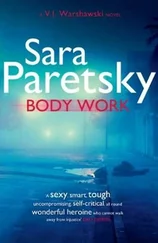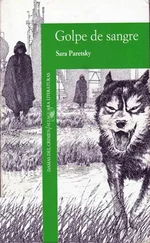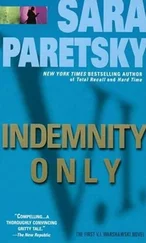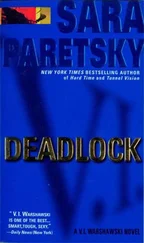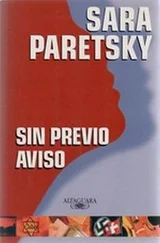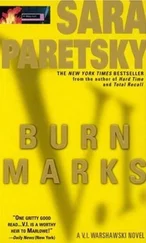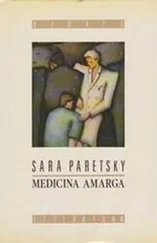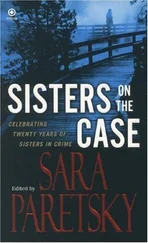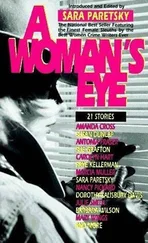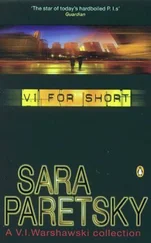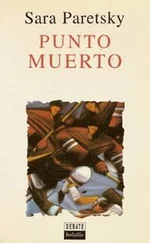
Book 12 in the V.I. Warshawski series, 2005
For Rachel, Phoebe, Eva, Samantha, and Maia-
my own hope for change in the world
Helen Martin, M.D., was most helpful in coming up with Long QT Syndrome, the heart condition afflicting one of V. I.’s basketball team. I’m grateful for her advice on the condition, its symptoms, and how to treat it. Thanks to Dr. Susan Riter for introducing us.
Mr. Kurt Nebel, the district manager at the CID Recycling and Disposal Facility on 138th Street, was quite generous with his time and expertise in explaining how and where the City of Chicago disposes of its garbage. Dave Sullivan made that important introduction, and also helped me spend time in the churches of South Chicago; I am grateful for all my experiences in that beleaguered community.
The City of Chicago produces over ten thousand tons of garbage a day; keeping up with it is a daunting task. Although the city’s landfills have been topped off in the last year or two, and Chicago sends most residential garbage out of town, I have kept the landfill at 122nd Street active for the purposes of this book.
Thanks to Janice Christiansen, president of FlagSource, for letting me visit their factory, and thanks to Beth Parmley for her informed and lively tour. She also suggested the accident described in chapter 44, “The Recording Angel…or Devil?” Sandy Weiss, of Packer Engineering, made this connection for me, and provided invaluable technical advice, including photographs of the accident. Fly the Flag does not resemble FlagSource in any way, shape, or form.
Judi Phillips helped with the plant life in V. I.’s childhood garden. Kathy Lyndes gave generously of her time and experience in many ways, including the painstaking work of finishing the draft. Jolynn Parker and the Fact Factory were most helpful as well. Calliope kept me from withering away in front of the computer by stealing my shoes at appropriate moments. The Senior C-Dog did his usual kneecap-endangering job as first reader, copy editor, and creator of chapter titles.
I owe special thanks to Constantine Argyropoulos for the CDs he created of V. I.’s music, which include all the pieces she’s sung or heard over the years. Nick Rudall provided Coach McFarlane’s Latin.
This is a work of fiction. Nothing in it is intended to reflect the reality of modern American life. For NFL purists, I moved the 2004 Kansas City-New England game from November 22 to November 15. For readers who fear that V. I. does not sufficiently adulate multinational conglomerates, please remember that she is a fictional character, and her views are not necessarily those of the management.
I was halfway down the embankment when I saw the red-orange flash. I dropped to the ground and covered my head with my arms. And felt a pain in my shoulder so intense I couldn’t even cry out.
Lying facedown in bracken and trash, I breathed in shallow panting breaths, a dog, eyes glazed, until the pain receded enough that I could move. I edged away from the flames on my hands and knees, then drew myself up on my knees and sat very still. I willed my breaths to come slow and deep, pushing the pain far enough away to manage it. Finally, I gingerly put a hand to my left shoulder. A stick. Metal or glass, some piece of the window that had shot out like an arrow from a crossbow. I tugged on the stick, but that sent such a river of agony flowing through me that I started to black out. I curled over, cradling my head on my knees.
When the wave subsided, I looked across at the factory. The back window that had blown apart was awash with fire, blue-red now, a mass so thick I couldn’t make out flames, just the blur of hot color. Bolts of fabric were stored there, fueling the blaze.
And Frank Zamar. I remembered him with a sudden appalled jolt. Where had he been when that fireball blew up? I pushed myself to my feet as best I could and stumbled forward.
Weeping with pain, I pulled out my picklocks and tried to scrabble my way into the lock. It wasn’t until my third futile attempt that I remembered my cell phone. I fumbled it out of my pocket and called 911.
While I waited on the fire trucks, I kept trying the lock. The stabbing in my left shoulder made it hard for me to maneuver the thin wards. I tried to brace them with my left hand, but my whole left side was shaking; I couldn’t hold the picklocks steady.
I hadn’t expected the fire-I hadn’t expected anything when I came here. It was only some pricking of unease-disease-that sent me back to Fly the Flag on my way home. I’d actually made the turn onto Route 41 when I decided to check on the factory. I’d made a U-turn onto Escanaba and zigzagged across the broken streets to South Chicago Avenue. It was six o’clock then, already dark, but I could see a handful of cars in Fly the Flag’s yard when I drove by. There weren’t any pedestrians out, not that there are ever many down here; only a few cars straggled past, beaters, people leaving the few standing factories to head for bars or even home.
I left my Mustang on one of the side streets, hoping it wouldn’t attract any roving punk’s attention. I tucked my cell phone and wallet into my coat pockets, took my picklocks from the glove compartment, and locked my bag in the trunk.
Under cover of the cold November night, I scrambled up the embankment behind the plant, the steep hill that lifts the toll road over the top of the old neighborhood. The roar of traffic on the Skyway above me blocked any sounds I made-including my own squawk when I caught my foot in a discarded tire and tumbled hard to the ground.
From my perch under the expressway I could see the back entrance and the side yard, but not the front of the plant. When the shift ended at seven, I could just make out the shapes of people plodding to the bus stop. A few cars bumped behind them down the potholed drive to the road.
Lights were still on at the north end of the plant. One of the basement windows facing me also showed a pale fluorescent glow. If Frank Zamar were still on the premises, he could be doing something-anything-from checking inventory to planting dead rats in the vents. I wondered if I could find a crate in the rubble that would get me high enough to see into the back. I was halfway down the hillside, searching through the debris, when the window went briefly dark, then burst into fiery life.
I was still struggling to undo the front lock when sirens keened up South Chicago Avenue. Two trucks, a command car, and a phalanx of blue-and-whites screamed into the yard.
Men in black slickers surrounded me. Easy there, miss, move away, we’ve got it covered, the ka-chung of axes breaking metal, my God-look at that thing in her shoulder, get her an ambulance, a giant gloved hand scooping me up as easily as if I were an infant, not a 140-pound detective, and then, as I sat sideways on the command car’s passenger seat, feet on the ground, panting again, a familiar voice:
“Ms. W., what in Jesus’ name are you doing here?”
I looked up, startled, and felt giddy with relief. “Conrad! Where’d you come from? How did you know I was here?”
“I didn’t, but I might have guessed if buildings were blowing up on my turf that you’d be close by. What happened?”
“I don’t know.” The current of pain was sweeping through me again, tugging me loose from my moorings. “Zamar. Where is he?”
“Who’s Zamar-your newest victim?”
“Plant owner, commander,” a man outside my narrow field of vision said. “Trapped in there.”
Читать дальше


